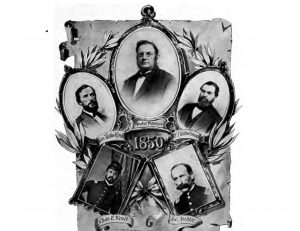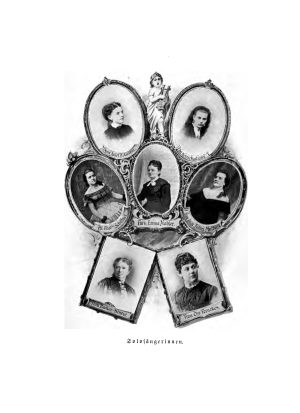The Milwaukee Musical Society represented the city’s rich German heritage and the spirit of Gemütlichkeit. It was established in 1849 and first performed in 1850. The amateur musical group operated under the direction of Austrian political refugee Hans Balatka until he left for Chicago in 1860.[1] Internal divisions, financial issues, and a fire that destroyed much of the club’s sheet music and instruments made the early years tumultuous.[2] In the latter part of the century another famed Milwaukee conductor, Eugene Luening, presided over the club for 25 years, providing a sense of stability.[3] The club performed well into the twentieth century, surviving competition from other amateur singing groups in the city as well as a growing anti-German sentiment in the wake of World War I. The group disbanded prior to American entry into World War II, and some remaining members joined the Arion Musical Club.[4]
Footnotes [+]
- ^ J.J. Schlicher, “Hans Balatka and the Milwaukee Musical Society,” Wisconsin Magazine of History 27, no. 1 (September 1943): 44. This entry was first published on July 6, 2016 and updated on October 23, 2019.
- ^ J.J. Schlicher, “The Milwaukee Musical Society in Times of Stress,” Wisconsin Magazine of History 27, no. 2 (December 1943): 180-188.
- ^ Ann Bakamijian Reagan, “Art Music in Milwaukee in the Late Nineteenth Century, 1850-1900,” (PhD diss., University of Wisconsin-Milwaukee, 1980), 109.
- ^ Reagan, “Art Music in Milwaukee in the Late Nineteenth Century,” 146.
For Further Reading
Reagan, Ann Bakamijian. “Art Music in Milwaukee in the Late Nineteenth Century, 1850-1900.” (PhD diss., University of Wisconsin-Milwaukee, 1980).
Schlicher, John J. “Hans Balatka and the Milwaukee Musical Society.” Wisconsin Magazine of History 27, no. 1 (1943): 40-55.
Schlicher, John J. “The Milwaukee Musical Society in Time of Stress.” Wisconsin Magazine of History 27, no. 2 (1943): 174-93.



0 Comments
Please keep your community civil. All comments must follow the Encyclopedia of Milwaukee Community rules and terms of use, and will be moderated prior to posting. Encyclopedia of Milwaukee reserves the right to use the comments we receive, in whole or in part, and to use the commenter's name and location, in any medium. See also the Copyright, Privacy, and Terms & Conditions.
Have a suggestion for a new topic? Please use the Site Contact Form.